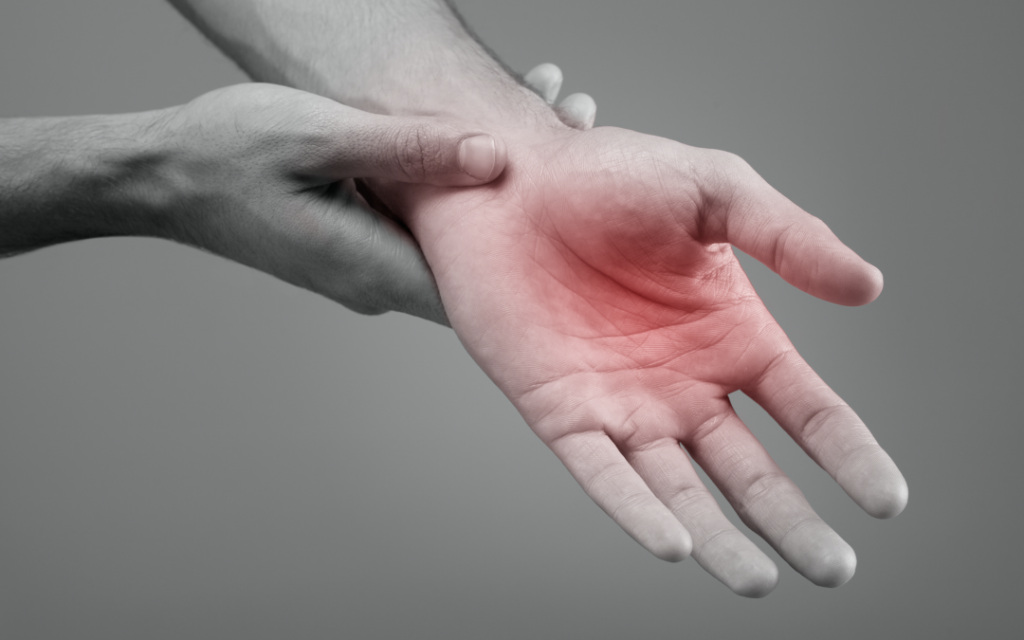Introduction
Carpal Tunnel Syndrome (CTS) is characterised by numbness, tingling, and pain in the hand and arm, caused by compression of the median nerve in your wrist. Accurately diagnosing this condition is crucial for effective treatment. This blog post explores the comprehensive diagnostic process for CTS, designed to ensure accurate identification and appropriate management of this common yet often disruptive condition.
Understanding Carpal Tunnel Syndrome
Before delving into the diagnostic process, it’s important to reiterate what CTS involves. The condition stems from increased pressure on the median nerve, which travels through the carpal tunnel in the wrist and provides sensation to the palm side of the thumb and fingers (except the little finger), as well as impulses to the muscle going to the thumb. CTS is commonly due to inflammation, repetitive movements, or anatomical differences that narrow the tunnel or increase the pressure within it.
Symptoms Prompting Diagnosis
Patients typically seek diagnosis when they experience persistent or severe symptoms such as:
- 1. Tingling or numbness in the fingers or hand, especially when these symptoms occur at night or in the early morning.
- 2. Pain radiating up the arm to as far as the shoulder.
- 3. Weakness in the hand or a tendency to drop objects due to diminished manual dexterity or grip strength.
Clinical Evaluation
- Patient History: A thorough review of the patient’s medical history, symptoms, and any pre-existing conditions that could contribute to nerve compression.
- Physical Examination: The doctor will examine the hands, arms, shoulders, and neck to determine if the symptoms are related to daily activities or an underlying disorder. They may perform tests such as:
- Tinel’s sign: Tapping on the median nerve at the wrist to see if it causes tingling in the fingers.
- Phalen’s maneuver: Having the patient hold their forearms upright by pointing the fingers down and pressing the backs of the hands together to see if this position causes numbness or tingling within 60 seconds.
- Durkan’s sign: Also known as the carpal compression test – is a diagnostic tool where pressure is applied directly to the carpal tunnel for about 30 seconds to see if it elicits symptoms of Carpal Tunnel Syndrome. This test is valuable for its simplicity and effectiveness in confirming the presence of CTS.
Diagnostic Tests
To confirm the diagnosis of CTS, further tests may be ordered if the doctor feels they are necessary:
- Nerve Conduction Studies (NCS): This test measures how fast electrical impulses move through the median nerve. Slower than normal impulse movements can indicate compression.
- Electromyography (EMG): Inserting a fine needle into a muscle, EMG measures the electrical activity in muscles when they contract and when they’re at rest. This test can determine if muscle damage has occurred from prolonged nerve compression.
Imaging Tests: While not routinely required, imaging tests such as X-rays, ultrasound, or MRI can be helpful if the physical exam and initial tests do not conclusively diagnose CTS or if other conditions such as arthritis or nerve damage need to be ruled out.
Risk Factors and Considerations
Several factors increase the risk of developing CTS, including:
- 1. Gender (women are more frequently affected due to smaller carpal tunnels)
- 2. Workplace factors (repetitive use of vibrating tools)
- 3. Health conditions (Diabetes, Rheumatoid arthritis)
- 4. Lifestyle factors (Obesity, Smoking) Understanding these risks can assist in early recognition and preventive measures.
What to Expect During the Diagnostic Process
Patients can expect multiple visits to complete all necessary tests if they are felt necessary by the doctor or surgeon. It’s important to prepare for each appointment by noting down any questions, symptoms, and the impact on daily activities to discuss with your healthcare provider.
Conclusion
The diagnosis of Carpal Tunnel Syndrome requires a comprehensive approach that includes clinical evaluation, diagnostic testing, and considering the patient’s history and symptoms. At Cardiff Gate Consulting Rooms, we are committed to providing a thorough diagnostic process to ensure our patients receive the most effective treatment tailored to their specific needs.



